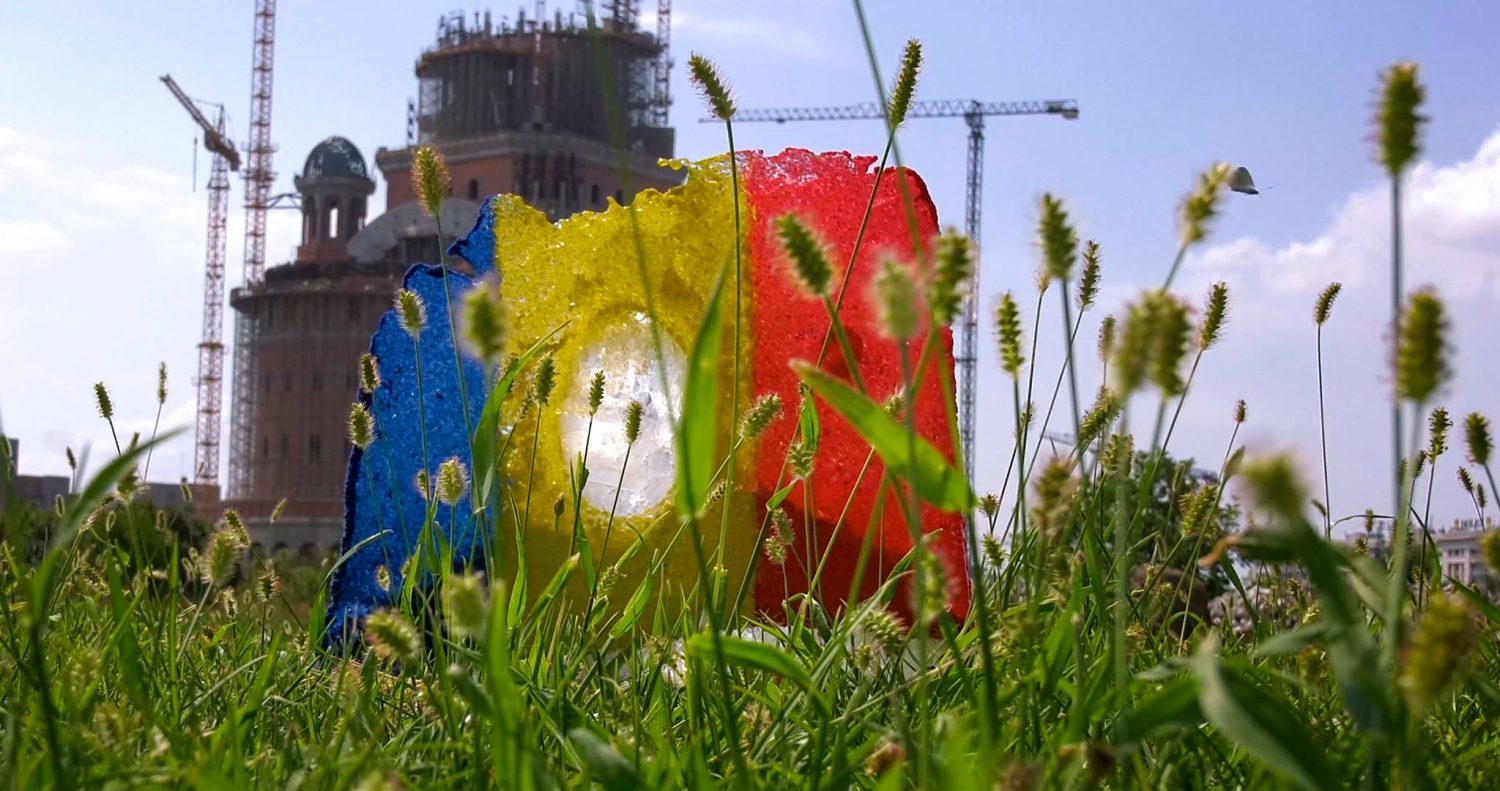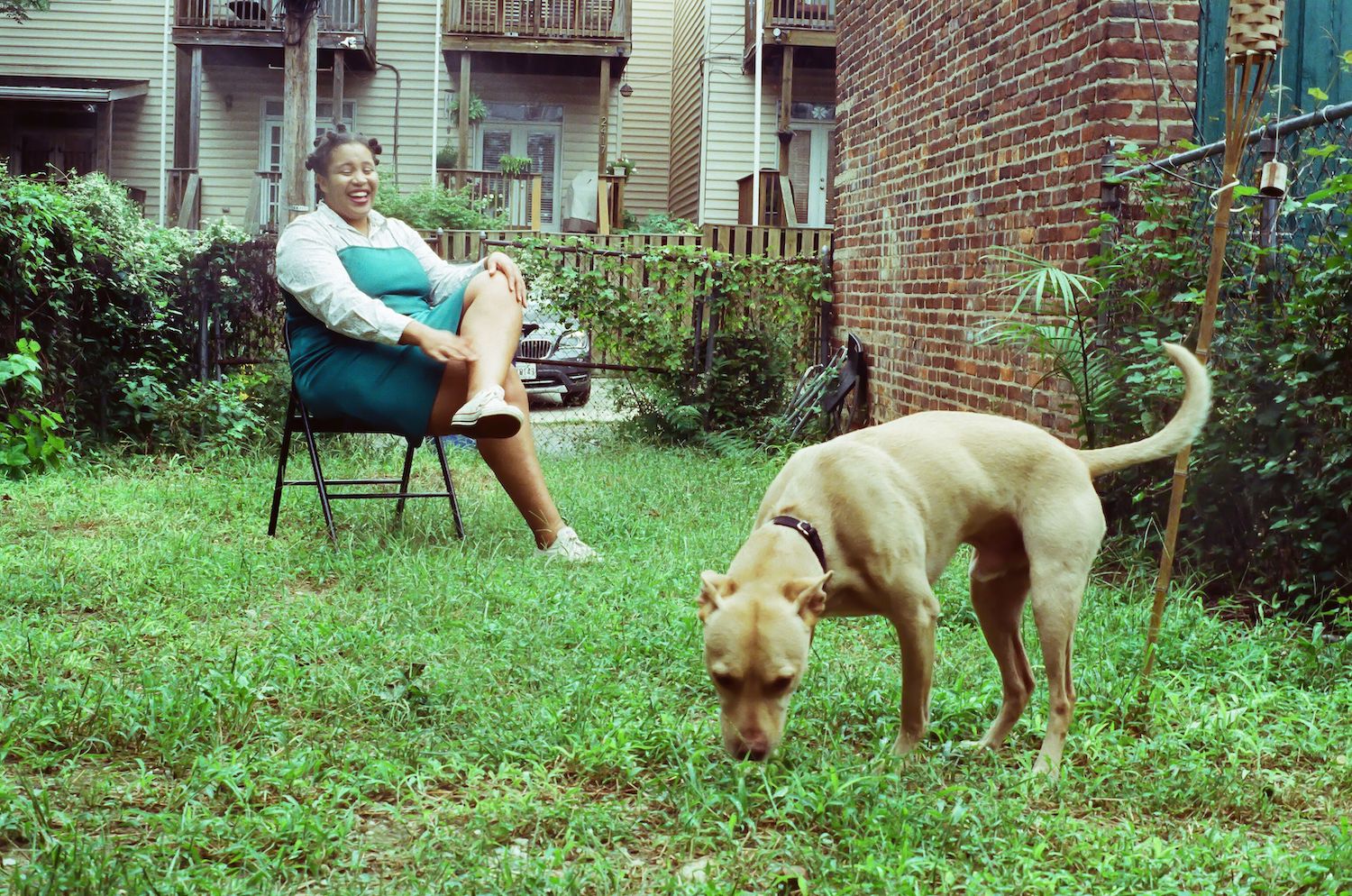If enthusiasm and expertise were two sides of a blade, Joy Davis would be the sword. You can hear it in her voice on Unravel, the podcast she hosts and produces. You can feel it in her decision to transform three chilly stories of a Baltimore City row house into Waller Gallery, a space dedicated to black and brown artists. Davis flourished in the intersection of Baltimore’s arts and community organizing scenes, double majoring in history and media studies at UMBC.
In 2013 her graduate studies at the Fashion Institute of Technology led to archiving, conservation, and curation. I sat down with Joy for a conversation about navigating home and work, public and private, and dreams versus reality.
Editor’s Note: This Interview was originally published in the BmoreArt Journal of Art+ Ideas: Issue 06 Home.

Lexie Mountain: Why Baltimore?
Joy Davis: Because I love it. I grew up in the county and I’d like to put that on the record. The city has given me a lot by way of culture and creativity throughout my life. I don’t think that the county necessarily needs my resources, and its not to say either that Baltimore needs me, but I also feel like I need the city. I was in New York for roughly five years. The art market is really rigorous there and I saw pathways for myself to work in that field or if I wanted to continue to work in fashion to work there, but it wasn’t in the way that I wanted to. I think people are very proactive here. It’s really about offering opportunity for incoming artists and I wouldn’t be able to do that in the same way in New York.
Tell me a little bit about Waller Gallery in its present form.
We’re growing pretty fast. Our mission is to support black and brown artists but also create programming facilities and opportunities for people and for the community. We’re really at a place now where we can say we’ve done that to a certain level and also figure out ways to be better at it, improve our facilities here, and think about the stories that we’re telling even more creatively than we were when we started.
What is your curatorial vision?
The mission is around working with the individual artist, with the message their work is telling and how can we program that out, how can we talk to the community about what’s on the walls so people don’t feel insecure when they walk into the space and want to talk about art, to ask questions and engage.
What has this live/work project revealed to you that you didn’t expect?
I didn’t expect to be as comfortable as I am. I don’t know how long the transition is going to be, and how the growing pains will be. Everyone that comes in is like, “Whoa, you have such a big space!” But I’ve actually tricked my brain into this not being my house. This is the gallery. How it has changed me is really how I’ve been able to compartmentalize the space. It shocked me even more when people pointed it out, “This is your house.” Yeah, but no, this is the gallery space.

What does compartmentalizing mean to you? How do you navigate the public and private?
Our sacred rooms are the bedroom and the living room specifically and we’re very careful whom we let in. In confirming your boundaries I don’t think you need to be rude or distant, it’s thinking about your relationships more and being more of an adult. I wouldn’t say I’m fully an adult, but more of an adult. I’m mature enough to have a house.
Tied into that sense of home is responsibility, then how is that responsibility valued or weighed, how are we looking at that and comparing it. For my family, this is not an adulting thing to do. Its not that they judge me, it’s more so like this isn’t a big deal, especially the older family. They have all owned houses in their lifetime, or more than one if they’ve gotten so lucky. I think we value homes very differently now and we put them in a bracket with responsibility and adulthood.
Access is definitely a big thing as well, a lot of people don’t have financial or social access to home ownership.
And they won’t because we, and I say “We The People” and not we as individuals. “We The People” have restricted access to so many needs. People need homes. Many people would be doing so much better if they had stable living conditions and a home. These are just things that we forget about when we’re thinking about economics. People do need places to stay that are stable. I’m very privileged and I say that all the time and I will keep saying that especially in this city but in general. I’m very privileged.
I feel the same and I feel like it’s important to acknowledge that, for me, white privilege led me to be in a position where I could purchase my house.
You should be aware of what’s going on around you and acknowledge it. I’m a gallery that set up shop on Calvert street on a block that doesn’t have any business or retail spaces, so we really had to think critically how are we gonna fit in to the neighborhood. People really want a permanent space where black people can congregate, hang out, party, turn up, and really feel safe, and I don’t think there’s anything wrong with that, its just the logistical nightmare of setting up a space. Just getting our vanilla white walls was tough enough. Adding liquor licenses and all that and then also thinking about how it’s going to impact the neighborhood… We had to really think about our space in that way too.
Since you moved in, have you had dreams about your house where you find rooms that you didn’t see before?
Memory is really crazy, and to attach it to the idea of home its interesting, your expectations about how a home is supposed to work. I’ve always been in either fully renovated apartments or the house that I grew up in, which was beautiful. It was essentially this but in much better shape. And so thinking about that, we wound up in a fixer upper, we were like “Sign us up!” And there’s energy in all spaces, right, because its filled with memories and your perceived ideas of what the memories are. That’s kind of why we liked it in here. Because it didn’t feel creepy in here, even though it was a fixer-upper. We blessed the house three times over. Everyone that comes in says it’s a warm feeling in here. I know it’s a higher situation happening in the house.
Where did the name Waller come from?
It’s my mom’s maiden name, and my grandmother’s name. My mom’s side of the family is a matriarchy. And that is bigger privilege than owning a house. A black matriarchy, and those women are nothing to fuck with. Thinking about memory and home, they really created an idea about what that’s supposed to be. I tried to do that here. They also have the mandate that they gave themselves and their kids when they had kids, that you should be uplifting the people around you, you should be strengthening the people around you. That doesn’t always mean that everything is sugar coated. Uplifting and supporting doesn’t always come with a hug, sometimes it comes with a push, right? Nothing violent, but a good shove in the right direction.
What is your vision down the road? In your ideal world, what do you see for Waller Gallery?
The basement would have studios to facilitate residencies for artists. I always had a dream of doing a façade project. We’d give grant money to black and brown Baltimore based muralists to do something on our façade. I want to give more opportunity to Baltimore artists. I’d love to have cooking classes and engage people in different ways, because we do that with our programming. I want to pay artists when they come into the space, give them a stipend.
We’ve been thinking about that through grant money as well. And also I would love to renovate the rest of the house. I want to pay a staff to get the artists’ work out there. It’s really not about me at the end of the day. I love taking interviews to talk about all the projects that I do but it really is about the artists. Truly, truly, truly, it’s about the artists. Any way I can make that happen, I will make that happen.

For more information go to Waller Gallery’s website at https://www.wallergallery.com/
Hours: Thursday-Saturday 12pm-5pm
2420 North Calvert St. Baltimore, MD 21218
Photos by David ‘Wavey’ Anderson III







